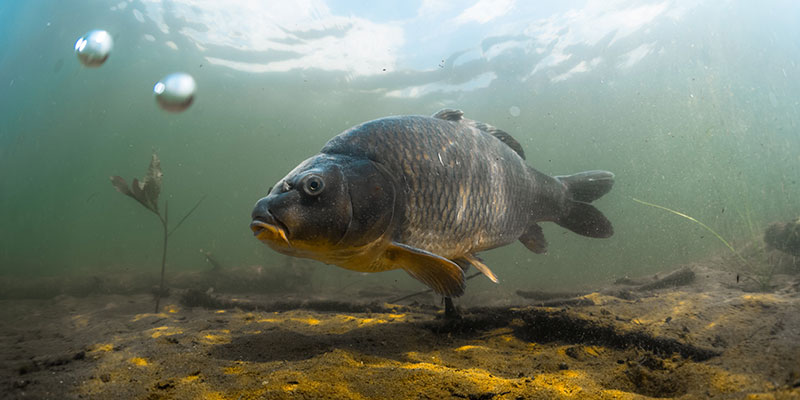Even after wastewater treatment, hormones excreted by users of birth control pills can enter the environment and disrupt fish populations.
Hormones from birth control pills and other ’emerging contaminants’ can remain in wastewater effluent even after treatment
A wide range of pollutants can contaminate freshwater systems, including physical contaminants such as plastics and microplastics, as well as chemicals, heavy metals, and other toxins. One class of pollutants, so-called “emerging contaminants,” includes pharmaceutical products. Their impact on the environment is an area of grave concern.
Research has shown that the anti-anxiety medication oxazepam can alter fish behavior, making them less social and more active, and speeding up their feeding rate.
More recent studies have focused on the impact of hormone-disrupting drugs on fish, which can become feminized when exposed to endocrine-disrupting chemicals in water. Exposure to hormone-disrupting compounds can lead to male fish producing female egg cells within the testes, a condition described as being “intersex.”
Some species of fish are naturally hermaphroditic, possessing both male and female sex organs, which enables them to change sex, thereby increasing their chances of reproducing. However, when male fish that are not hermaphrodites produce female eggs, it can significantly affect breeding success. A study conducted on wild roach, a fish in the minnow family, showed that intersex males produced less seminal fluid (milt), their semen had a lower sperm count, and their sperm were less motile than that of normal male fish. More importantly, their fertilization success was lower.
Hormones From Birth Control Pills
The presence of feminized fish in waterways has been linked to wastewater effluent discharges, with the hormone ethinyl estradiol — a potent estrogen hormone found in women’s birth control pills — being the primary endocrine-disrupting compound responsible for feminizing male fish.
Because it is difficult to remove ethinyl estradiol from wastewater with standard wastewater treatment processes, it often is discharged into waterways with treated wastewater effluent. Consequently, feminized fish are starting to pop up everywhere, with at least 37 freshwater species around the world currently affected.
Upgrading Treatment to Protect Fish
One way to protect male fish from being feminized is to upgrade wastewater treatment plants so they are better equipped to deal with the estrogen compounds excreted by women. Improvements to a Canadian wastewater treatment plant are showing great promise. Small upgrades to the plant improved the removal of ammonia, which resulted in wastewater effluent containing much lower estrogen levels.
The number of intersex fish (rainbow darters) found downstream from the plant dropped from 70-100% before the improvements to less than 10% after the plant was upgraded. Levels of other pharmaceutical products and nutrients also decreased after the upgrades. This study highlights how simple upgrades to control the flow of estrogenic compounds into waterways can vastly improve the health and integrity of aquatic ecosystems.
Fluence’s Advanced Wastewater Treatment Solutions
Fluence offers a proven efficient and effective wastewater treatment technology based on membrane aerated biofilm reactor (MABR) technology. Nitrification and denitrification processes take place simultaneously in the same tank, thereby speeding up the removal of ammonia.
Fluence’s MABR technology is available in different configurations:
- Aspiral™: This modular wastewater treatment system is portable and scalable, and can be used alone or in conjunction with other treatments. Units are packaged in standard shipping container for quick deployment and setup.
- SUBRE: Greenfield wastewater treatment plants or activated sludge wastewater treatment plant upgrades using towers of MABR units to improve efficiency and effluent quality.
Contact Fluence to find out how we can help you improve effluent quality and protect fish populations, while also reducing costs.

